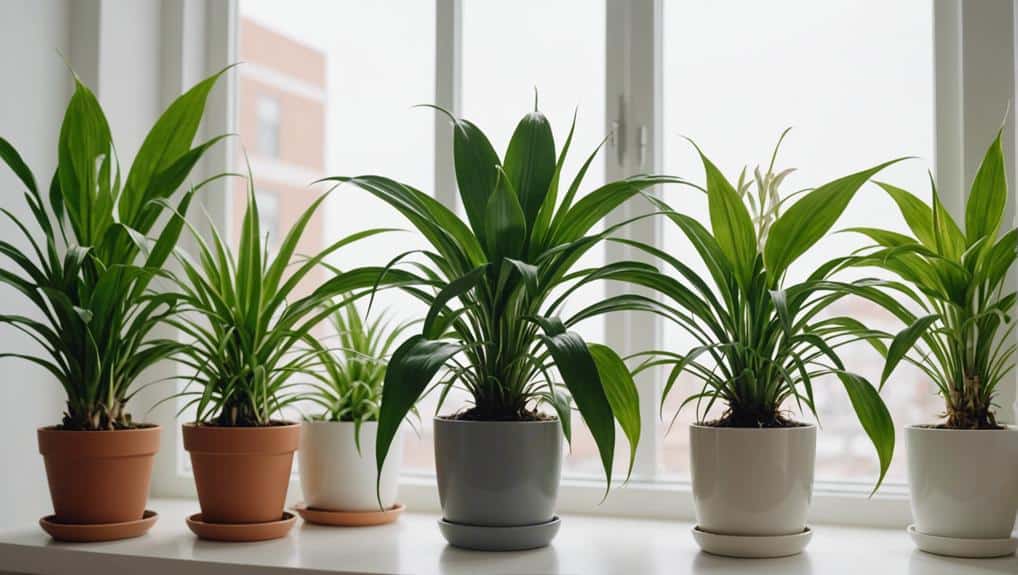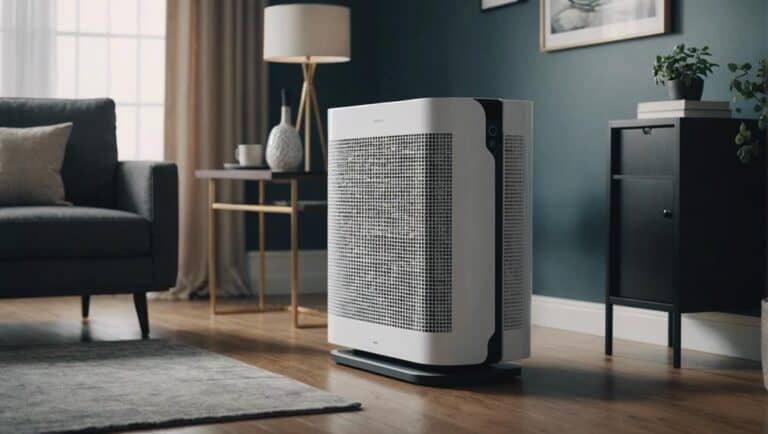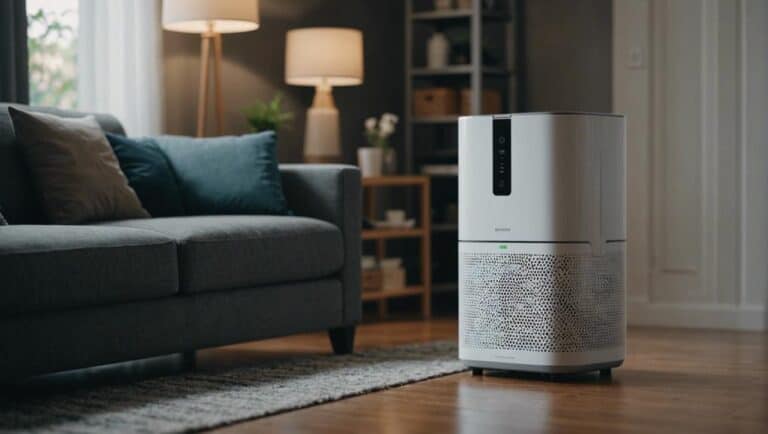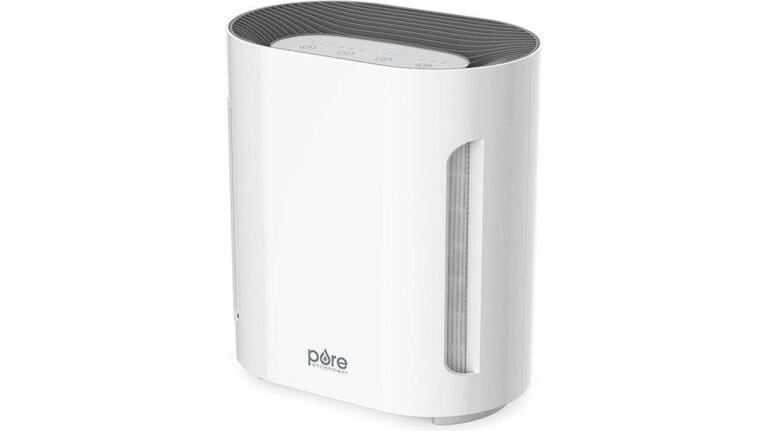Top 10 Indoor Plants for Cleaner Air With Air Purifying Qualities
As we uncover the domain of indoor plants, it becomes apparent that certain varieties possess remarkable air-purifying qualities. These top 10 indoor plants for cleaner air are not only green companions but also silent heroes of air quality improvement. Exploring the world of indoor greenery reveals a serene yet impactful way to enhance our living spaces while benefiting from their natural ability to cleanse the air we breathe.
Peace Lily
Peace Lily stands out as a top choice for indoor air purification due to its white flowers and exceptional ability to effectively remove toxins from the air.
When it comes to creating a clean air environment within our homes, Peace Lily proves to be a valuable asset.
This air purifying plant not only adds a touch of elegance with its beautiful white blooms but also works tirelessly behind the scenes to improve the quality of the air we breathe.
Aloe Vera
Aloe Vera offers numerous benefits, from purifying the air to providing healing properties for skin irritations.
We can maintain its health by ensuring it receives adequate sunlight and water.
Placing Aloe Vera near a window where it can get some sunlight and ensuring not to overwater it are key factors in its care.
Aloe Vera Benefits
With its renowned air-purifying qualities, Aloe Vera stands out for its ability to effectively remove chemicals found in detergents, paint, and glue. Here are some benefits of having Aloe Vera as an indoor plant:
- Aloe vera releases oxygen and absorbs carbon dioxide, improving indoor air quality while you sleep.
- This plant’s ability to absorb toxins through its leaves into the roots contributes to its effectiveness as an air purifier.
- Aloe vera provides health and beauty benefits beyond air purification, making it a versatile indoor plant.
- It’s a low maintenance plant that adds aesthetic appeal while actively purifying the air in your home.
Aloe Vera Care
Enhancing the growth and longevity of Aloe Vera plants involves understanding their specific care requirements to guarantee the best air-purifying benefits. Aloe Vera thrives in well-draining soil and requires ample sunlight, making it ideal for indoor spaces with bright, indirect light. To secure the best air quality benefits, water the plant deeply but infrequently, allowing the soil to dry out between waterings.
Avoid overwatering, as this can lead to root rot. Regularly remove dead leaves and debris to promote healthy growth. Aloe Vera is a low-maintenance plant, but occasional feeding with a balanced fertilizer can support its air-purifying capabilities. By providing proper care, Aloe Vera can effectively enhance air quality in your indoor environment.
Aloe Vera Placement
Placing Aloe Vera in a well-lit area with indirect sunlight is essential for its best growth and air-purifying properties. Here are four key points for the best Aloe Vera placement:
- Avoid Direct Sunlight: Direct sunlight can burn the leaves of Aloe Vera, so it’s best to place it where it can get bright, indirect light.
- Indoor Temperature: Maintain a consistent indoor temperature between 60-80°F (15-27°C) for the Aloe Vera plant to thrive.
- Well-Draining Soil: Use well-draining soil for Aloe Vera to prevent root rot, as it prefers slightly dry conditions between watering.
- Ventilation: Good air circulation is essential for Aloe Vera’s health, so make sure there’s proper ventilation in the area where it’s placed.
Weeping Fig
Weeping Fig is a versatile plant that thrives both indoors and outdoors.
Weeping Fig’s glossy leaves make it an appealing addition to any space.
Let’s explore Weeping Fig care, benefits, and placement to make the most of this excellent air-purifying plant.
Weeping Fig Care
Taking care of the Weeping Fig plant involves providing the appropriate amount of light and water to guarantee its health and growth. Here are four essential care tips for your Weeping Fig:
- Light: Place the Weeping Fig in a spot with bright, indirect light. Avoid direct sunlight, which can scorch its leaves.
- Watering: Keep the soil consistently moist but not waterlogged. Ensure proper drainage to prevent root rot.
- Humidity: Weeping Fig plants thrive in humid environments. Mist the leaves regularly or use a humidity tray to maintain moisture levels.
- Pruning: Trim back any leggy growth to maintain a bushy appearance. Regular pruning helps the plant stay healthy and vibrant.
Weeping Fig Benefits
When caring for the Weeping Fig plant, we can appreciate its ability to effectively purify indoor air from adhesives and nail polishes. This houseplant is a champion at removing harmful chemicals, enhancing the quality of the air we breathe indoors.
The glossy leaves of the Weeping Fig not only add a touch of greenery but also act as natural air purifiers, making it a valuable addition to any home. However, despite its air-purifying benefits, it’s important to bear in mind that the Weeping Fig can be toxic to pets.
Weeping Fig Placement
Placing the Weeping Fig in a location that’s out of reach for pets is vital due to its potential toxicity to animals. When considering the placement of this air purifying indoor plant, keep these key points in mind:
- Indoor Environment: Weeping Fig thrives indoors, making it a perfect addition to your home or office space.
- Avoid Harmful Chemicals: Position the plant away from areas with high concentrations of harmful chemicals to maximize its air-purifying benefits.
- Natural Light: Place the Weeping Fig in a spot with ample natural light to support its growth and air purification capabilities.
- Pet Safety: Make sure the plant is placed in a secure location to prevent pets from accessing it and potentially getting harmed.
Boston Fern
Restoring moisture levels in indoor spaces, the Boston Fern excels at enhancing air quality. As one of the top air-purifying plants, it serves as a natural humidifier, improving indoor air by adding moisture.
This plant’s ability to cleanse the air makes it a valuable addition to any controlled environment. Boston Fern not only beautifies indoor settings but also offers significant air-purifying benefits, making it a desirable choice for those seeking to maintain a healthier atmosphere.
Studies have underscored its effectiveness in combating dry skin, particularly in cold weather, further solidifying its reputation as an excellent air purifier. Whether placed in offices, homes, or other indoor spaces, the Boston Fern is a reliable option for individuals who prioritize clean and fresh air.
With its proven track record in enhancing indoor air quality and restoring moisture levels, this plant stands out as a top choice among air-purifying plants.
Spider Plant
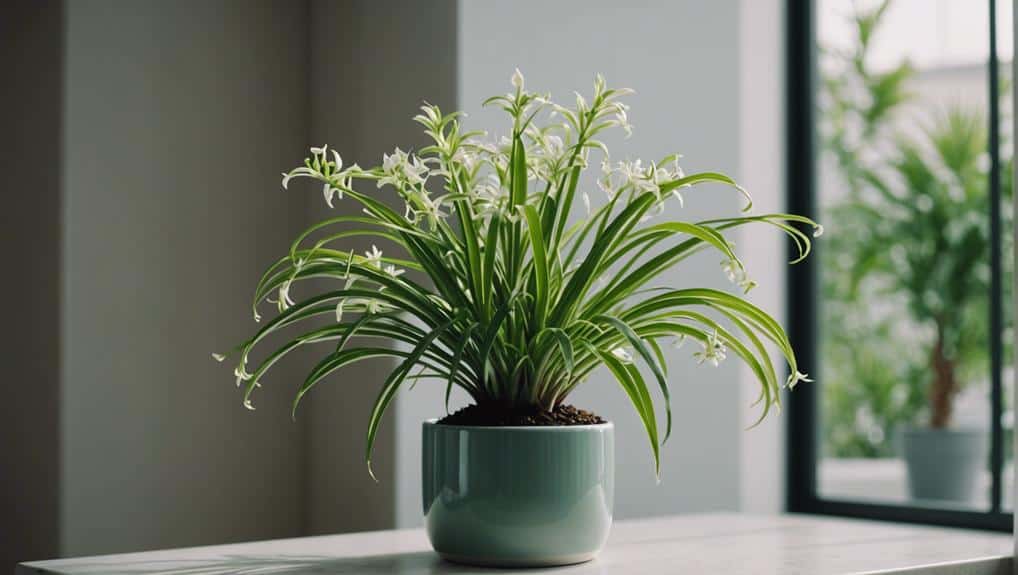
Spider plants offer numerous benefits for indoor air quality. They are known for their ability to remove carbon dioxide and produce oxygen. Our article will cover the advantages of having a spider plant in your home. We will also provide tips on how to care for these low-maintenance plants effectively.
We aim to highlight why spider plants are a popular choice for those looking to enhance the air quality of their living spaces.
Spider Plant Benefits
Indoor air quality can greatly benefit from the presence of the resilient and oxygen-producing spider plant. Here are some key benefits of having spider plants in your indoor environment:
- Efficiently removes carbon monoxide from the air, contributing to a healthier indoor environment.
- Known for their oxygen-producing qualities, spider plants help increase the oxygen levels in the indoor environment.
- Easy to grow and maintain, making them perfect for those who desire control over their indoor plants.
- Resilient and adaptable to various lighting conditions, ensuring they thrive in different indoor environments.
Having spider plants not only improves air quality but also adds a touch of greenery to your living space.
Spider Plant Care
When caring for the spider plant, ensuring it receives adequate sunlight and well-draining soil is essential for its thriving growth. Spider plants are excellent at purifying the air by removing harmful pollutants like formaldehyde and carbon monoxide. These plants are low-maintenance and easy to care for, making them a perfect choice for indoor spaces.
To keep your spider plant healthy, remember to prune any yellow or brown leaves regularly. Additionally, occasional misting can help maintain its beauty. With their long, arching leaves and the ability to produce baby spider plantlets, these plants not only clean the air but also add a touch of greenery to your environment.
Dracaena
Among the top 10 indoor plants known for their air-purifying qualities, Dracaena stands out for its ability to effectively remove toxins like formaldehyde, benzene, and trichloroethylene from the air. Here are some key points about Dracaena:
- Air Purifying Qualities: Dracaena is a popular houseplant recognized for its excellent air-purifying properties.
- Toxin Removal: It efficiently eliminates harmful toxins such as formaldehyde, benzene, and trichloroethylene, promoting cleaner indoor air.
- Variety: Dracaena plants come in various species, offering a range of leaf colors and patterns to suit different preferences.
- Low Maintenance: These plants are low maintenance and can thrive in environments with indirect sunlight, making them ideal for those who desire both clean air and easy care.
With NASA recommending Dracaena for its ability to enhance indoor air quality, incorporating this plant into your living or workspace allows you to have greater control over the air you breathe, ensuring a healthier environment.
Bamboo Palm
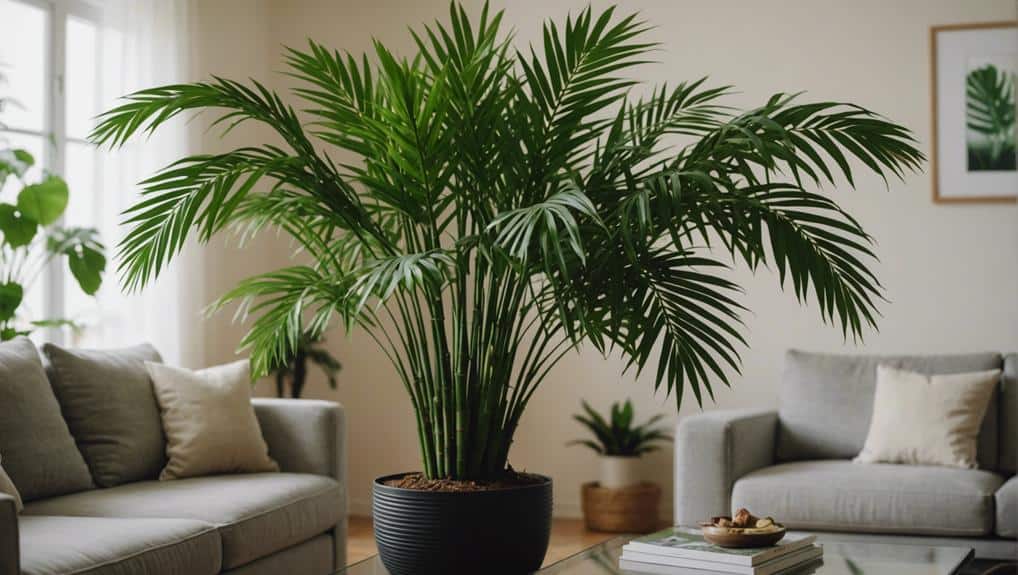
With its renowned air-purifying qualities, the Bamboo Palm efficiently filters out formaldehyde, benzene, and chloroform, making it a popular choice for enhancing indoor air quality. This low-maintenance tropical plant not only adds a touch of elegance to your space but also works actively to remove harmful toxins, such as formaldehyde commonly found in household products. The Bamboo Palm’s ability to thrive indoors while purifying the air makes it a top choice for those seeking cleaner and fresher indoor environments.
| Features | Description |
|---|---|
| Air purifying | Efficiently filters out formaldehyde, benzene, and chloroform |
| Low-maintenance | Requires minimal care and can thrive indoors |
| Tropical | Adds a tropical touch to your space while purifying the air |
| Aesthetic | Enhances indoor spaces with its elegant and green appearance |
Chrysanthemum
Moving on from the Bamboo Palm, another excellent indoor plant for cleaner air is the Chrysanthemum, known for its effectiveness in eliminating VOCs like ammonia and benzene. Here are some key points about the Chrysanthemum:
- Air Purifying Abilities: The Chrysanthemum is renowned for its air-purifying qualities, making it a popular choice for those seeking cleaner indoor air.
- VOC Elimination: This plant is particularly efficient at removing volatile organic compounds (VOCs) such as ammonia and benzene, which are common indoor pollutants.
- Long-Lasting Blooms: The blooms of the Chrysanthemum can last up to six weeks, providing continuous air purification benefits throughout its flowering period.
- Aesthetic Appeal: In addition to its air-purifying properties, the Chrysanthemum adds a touch of beauty to indoor spaces, combining functionality with visual appeal.
Incorporating a Chrysanthemum into your indoor environment not only helps in cleaning the air but also enhances the overall ambiance with its striking blooms and effective VOC filtration capabilities.
English Ivy
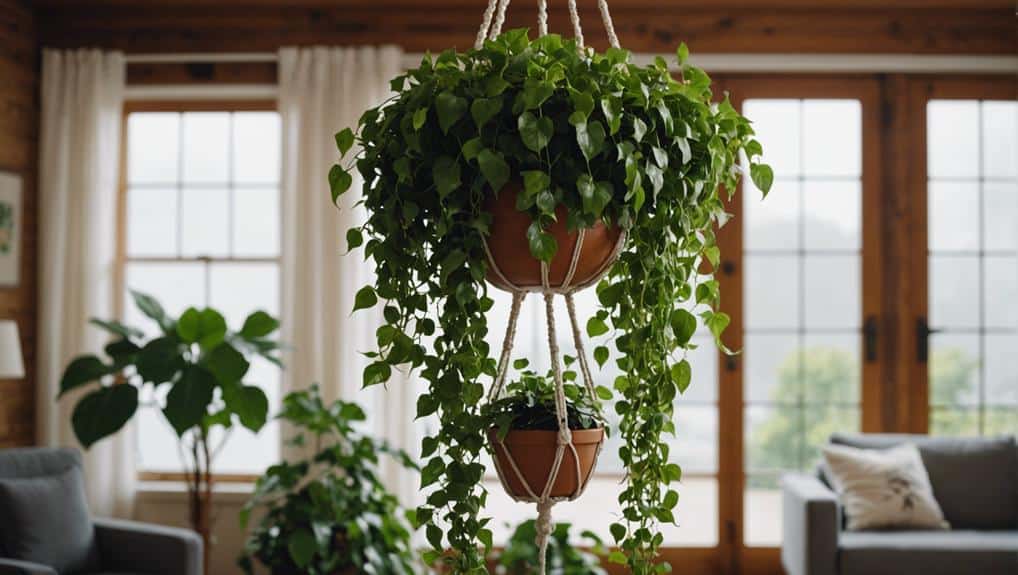
English Ivy, renowned for its air-purifying qualities, effectively removes airborne toxins and enhances indoor air quality. This plant is a powerhouse when it comes to purifying the air, particularly excelling at filtering out formaldehyde, benzene, and other harmful chemicals that might be present indoors. Its ability to thrive in various light conditions makes it a convenient choice for those seeking to improve their indoor air environment. Studies have confirmed that English Ivy can markedly reduce pollutants, making it a valuable addition to any space where air quality is a concern.
Not only does English Ivy contribute to cleaner air, but its lush, cascading vines also bring a touch of elegance and natural beauty to indoor settings. With English Ivy in your space, you can breathe easier knowing that this plant is working diligently to purify the air you and your loved ones breathe.
Snake Plant
Considered an exceptional air purifier, the Snake Plant, also known as Sansevieria, efficiently removes toxins like formaldehyde and benzene from indoor air. Here are some key points about why the snake plant is a must-have for those who value clean air:
- Air Purifying Abilities: Snake plants excel at filtering out harmful toxins commonly found in indoor air, such as formaldehyde, benzene, and xylene, promoting a healthier living environment.
- Low-Maintenance: These plants are easy to care for and can thrive in low light conditions, making them perfect for busy individuals or indoor spaces with limited sunlight.
- Ideal for Bedrooms: Snake plants are particularly beneficial in bedrooms as they release oxygen at night, enhancing air quality while you rest and recharge.
- NASA-Approved: The NASA Clean Air Study has proven the effectiveness of snake plants in purifying indoor air, making them a reliable choice for those seeking cleaner air in their homes.
With its air-purifying qualities and aesthetic appeal, the snake plant is a versatile addition to any indoor space dedicated to clean air.
Conclusion
To sum up, incorporating these top 10 indoor plants for cleaner air into your living space not only enhances its aesthetics but also improves the air quality you breathe.
With their air purifying qualities, these plants help to filter out toxins and create a healthier indoor environment.
So why not bring some greenery indoors and enjoy the benefits of cleaner air and a fresher atmosphere in your home or office?
